Year 4 White Rose Overview
With thanks to Third Space Learning for this overview:
Topics covered in Year 4 White Rose Maths scheme of learning
Year 4 autumn term
- Place value
- Addition and subtraction
- Area
- Multiplication and division (A)
Year 4 spring term
- Multiplication and division (B)
- Length and perimeter
- Fractions
- Decimals (A)
Year 4 summer term
- Decimals (B)
- Money
- Time
- Shape
- Statistics
- Position and direction
White Rose Maths Year 4 autumn term
At the start of term in the autumn block 1, Year 4 focuses on place value, addition & subtraction, area and multiplication & division.
Place Value Year 4
Place value is a principal focus of mathematics teaching in Year 4, covering a four week period at the start of the autumn term. The topic progresses on from White Rose Maths Year 3, with a number of new concepts introduced to pupils for the first time. Pupils compare numbers beyond 1000; find 1000 more and less; count backwards through zero and round numbers to the nearest 10, 100 and 1000. At this stage, pupils also practise using Roman Numerals.
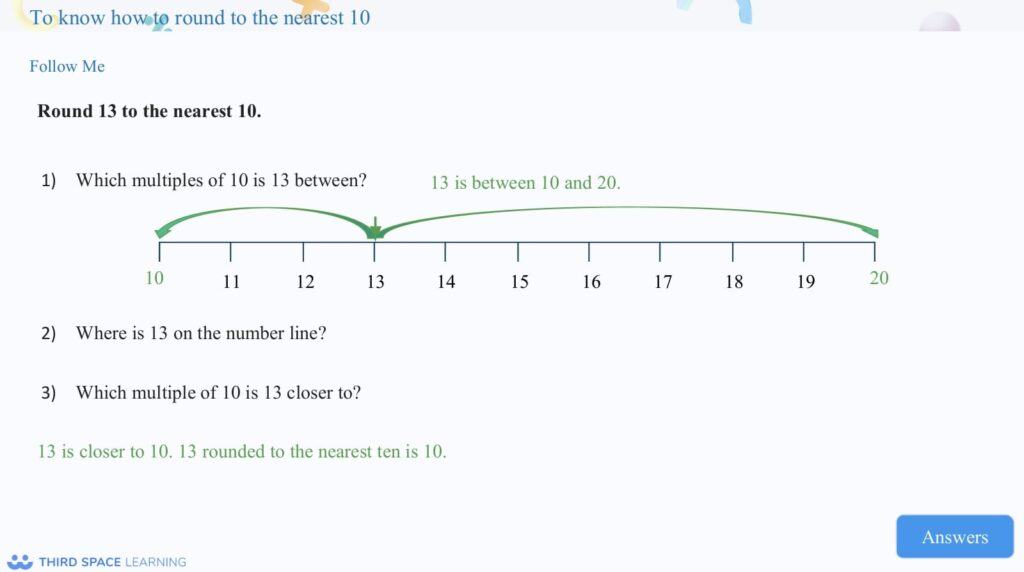
An example of building upon knowledge of multiples of 10 to understand rounding.
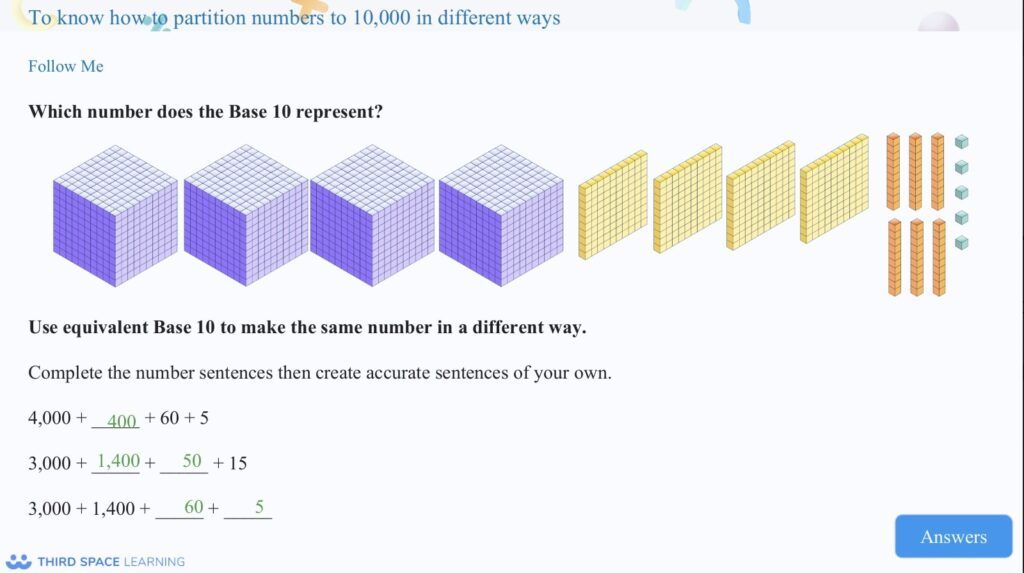
This Third Space Learning slide shows using non-standard partitioning to partition
a number as well as representing a number using concrete resources.
Example year 4 place value questions
1. What is the value of the underlined digit? 4769
Answer: 6 tens or 60
2. Can you partition the number 7,358?
Answer: 7,000 + 300 + 50 + 8
3. What number is represented by the place value counters:
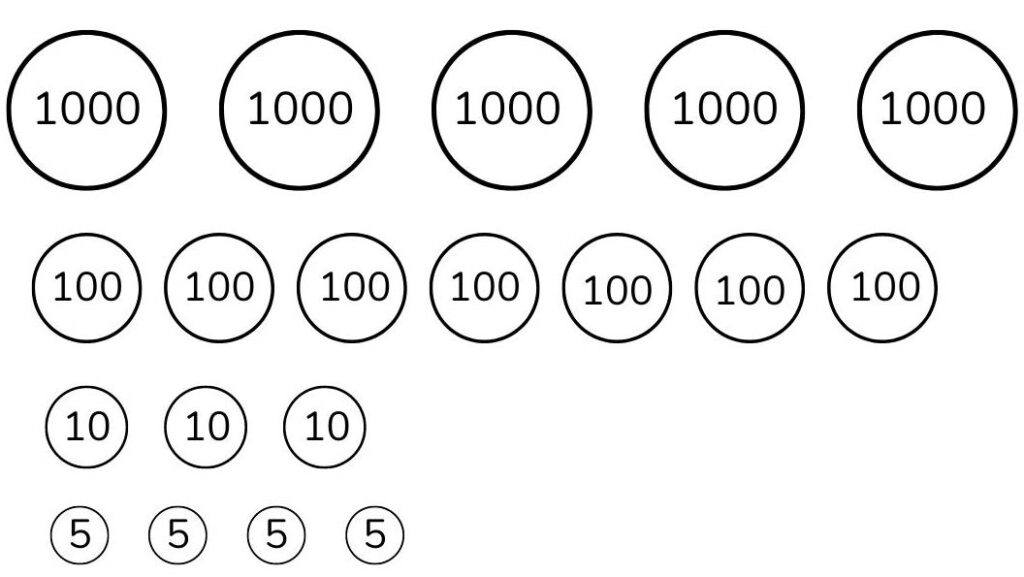
Answer: 5,734
Addition and Subtraction Year 4
In year 4 during autumn block 2, children progress from adding and subtracting numbers with up to 3 digits, using a formal method, to numbers with up to 4 digits. Children continue to work with concrete resources, starting with no exchanging, then progressing to one exchange, followed by more than one exchange. They build on the problem solving skills developed in Year 3, moving from solving one-step problems, to more complex two-step problems.
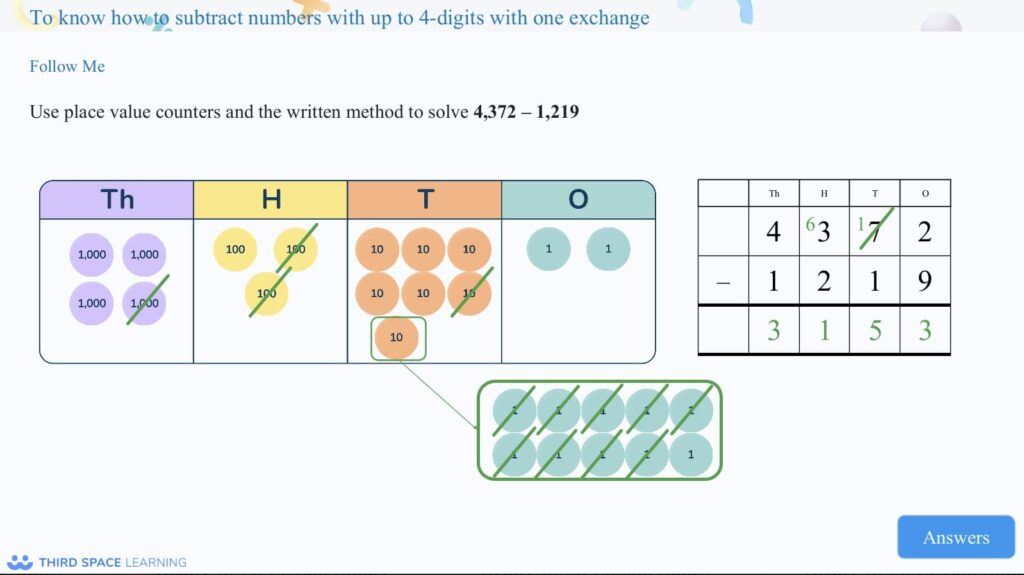
This slide shows developing an understanding of exchanging using concrete
resources as well as a formal written method.
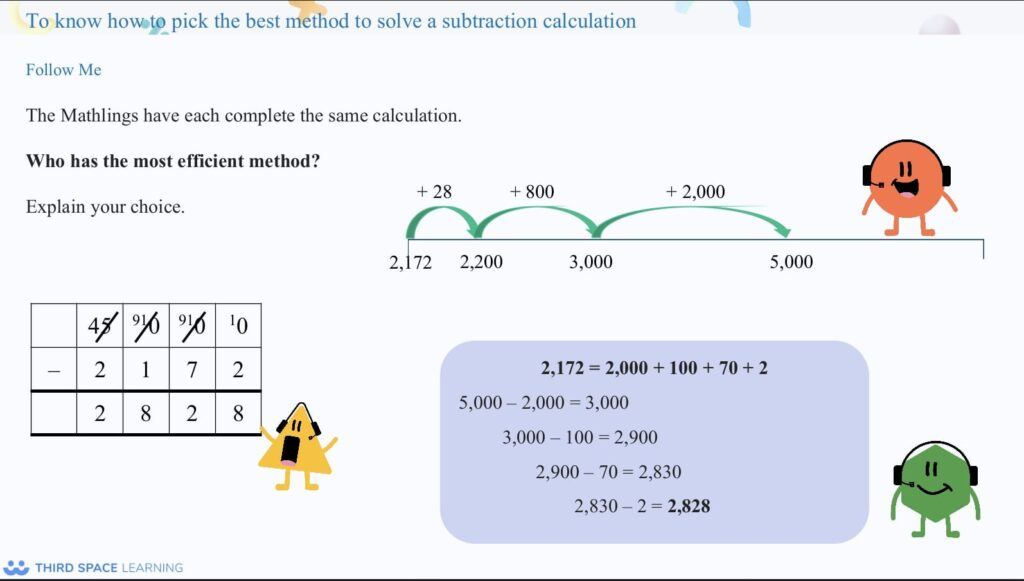
It is important that pupils understand they can use different methods to solve a calculation
and the written method is not always the most efficient method.
Example year 4 addition and subtraction questions
1. 6395 + 3867 =
Answer: 10,262
2. 9342 – 4867 =
Answer: 4,475
3. A pilot flew 3756km to his first destination. He then flew a further 2576km to reach his second destination. How far did he fly altogether?
Answer: 6,332km
Area Year 4
In version 3 of the White Rose scheme of learning, the area topic has been taken from the spring term and has replaced length and perimeter in autumn block 3. This is a new concept in year 4, having been exposed to only perimeter in year 3. At this stage, they find the area of rectilinear shapes by counting squares.
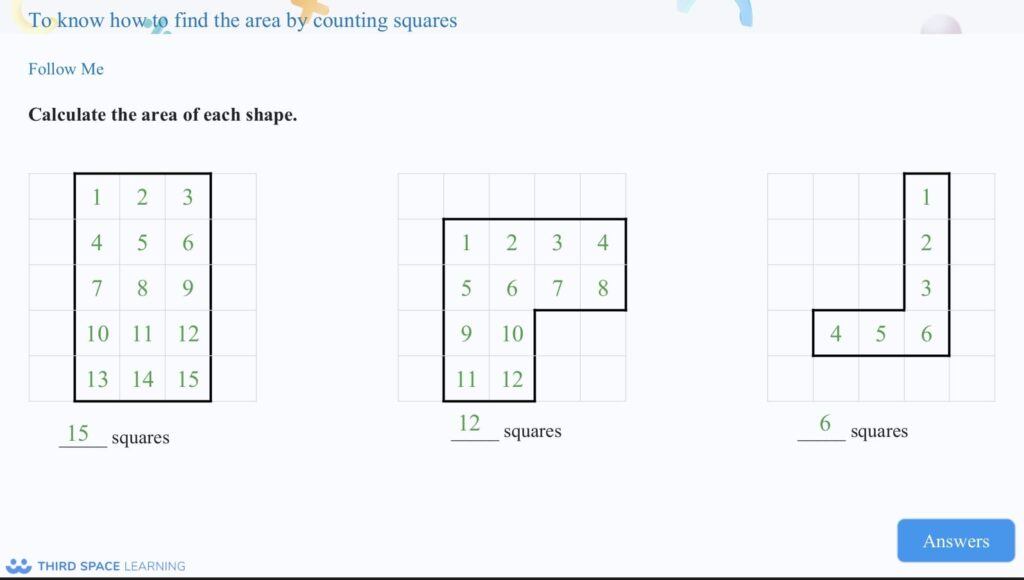
Pupils learn to understand that the area is the size of the surface of a 2-D shape. In Year 4,
they explore this via counting squares.
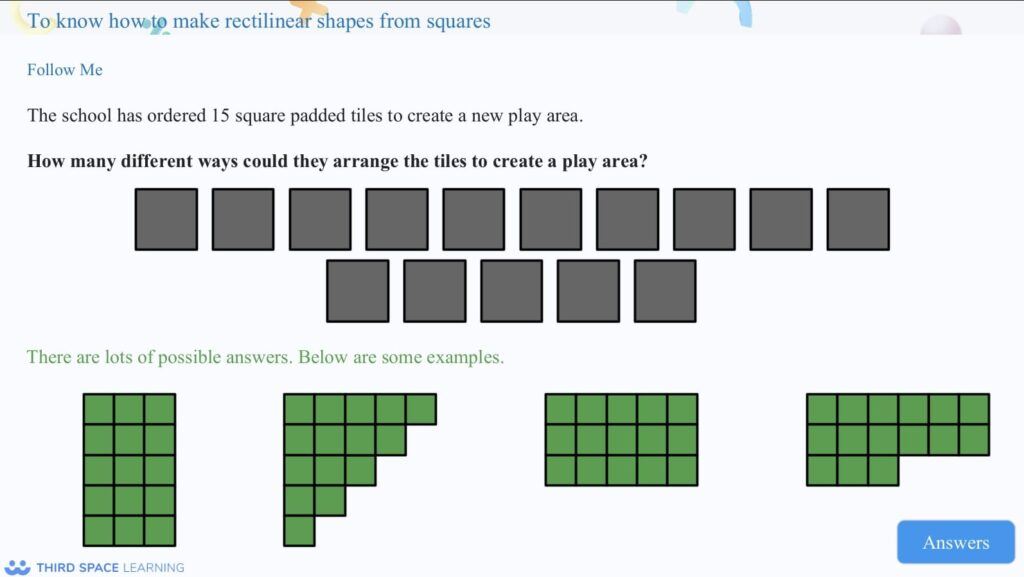
Children also explore the concept that different shapes can have the same area.
Example year 4 area questions
1. Calculate the area of this shape (each square is 1cm)
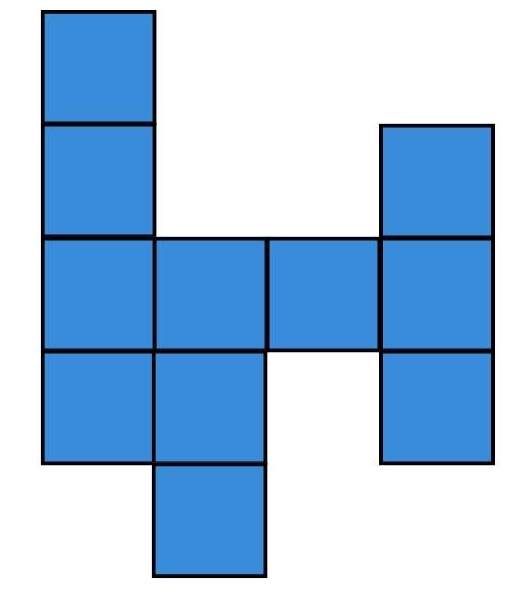
Answer: 11cm22
2. Draw your own shape with an area of 11 squares
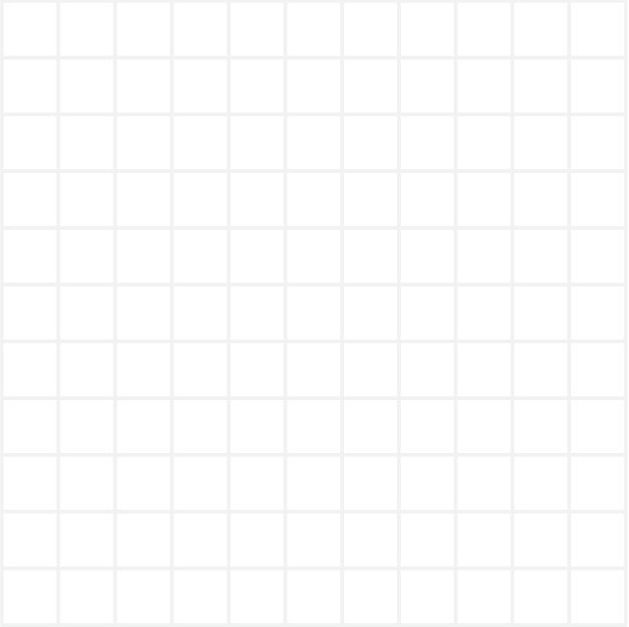
Multiplication and Division Year 4
Multiplication and division has been split into two blocks, with block A in autumn block 4, at the end of the autumn term and block B in the spring.
Multiplication and Division A Year 4
The first block of multiplication and division focuses on times tables knowledge; looking at multiplying and dividing. Initial focus is on the 3, 6 and 9 times tables, followed by the 7, 11 and 12 times tables. Pupils also explore multiplying and dividing by 1 and 0 and multiplying three numbers together.
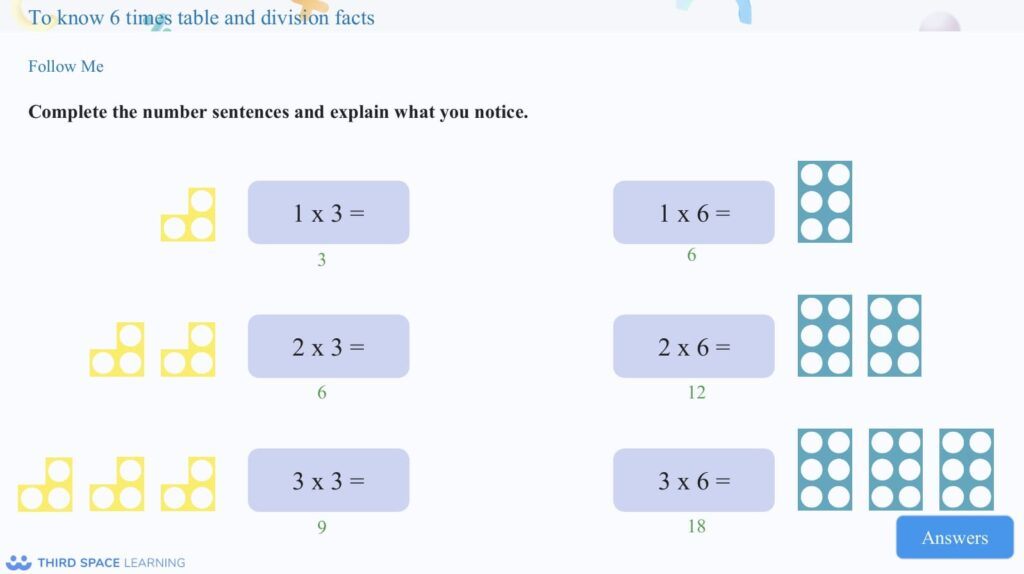
Children explore the link between the three times tables and the six times tables.
It is important to make connections
between different times tables as they are learning.
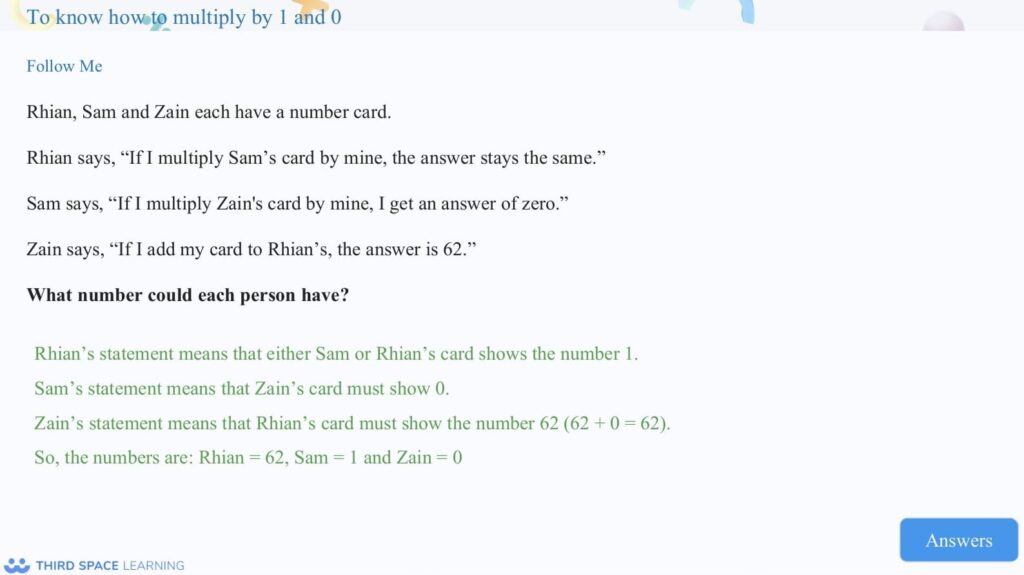
While pupils are learning about multiplication, it is important they
also learn about multiplying by 1 and 0.
Example year 4 multiplication and division A questions
1 . 7 × 9
Answer: 63
2. Sam bought 7 boxes of eggs. How many eggs did he have in total?
Answer: 7 × 6 = 42
White Rose Maths Year 4 spring term
Multiplication and division B Year 4
This is the second block, following on from the initial multiplication and division block in the Autumn term. In this block, pupils utilise the skills developed in Block A,. Initially they investigate factor pairs and multiplying & dividing by 10 and 100, they then move on to using formal written methods to multiply 2 and 3-digit numbers by 1 digit and explore ways of partitioning 2 and 3 digits as a progression towards formal written method for division.
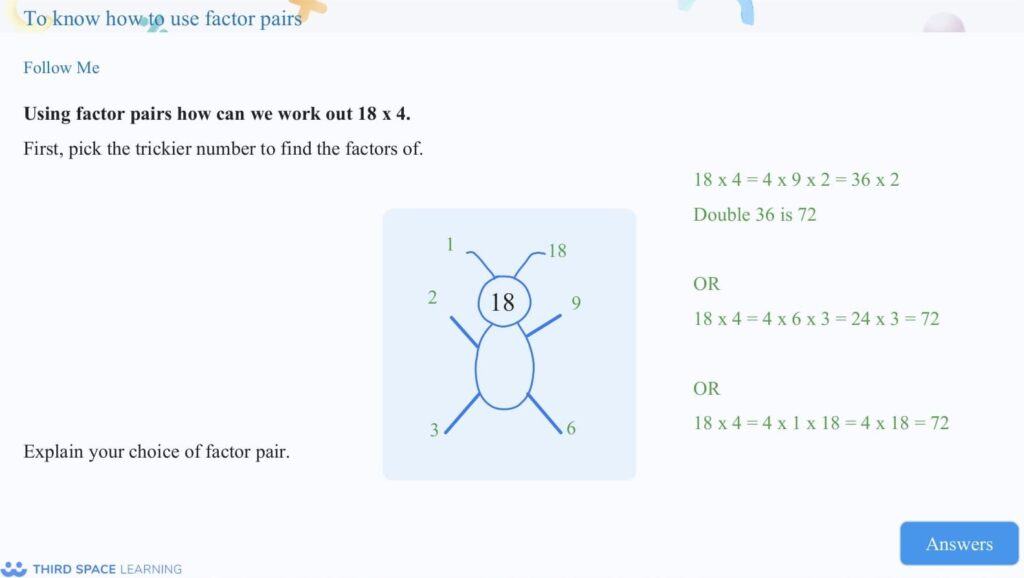
Children don’t only learn about factors, they also learn how they can
use factors to help solve other calculations.
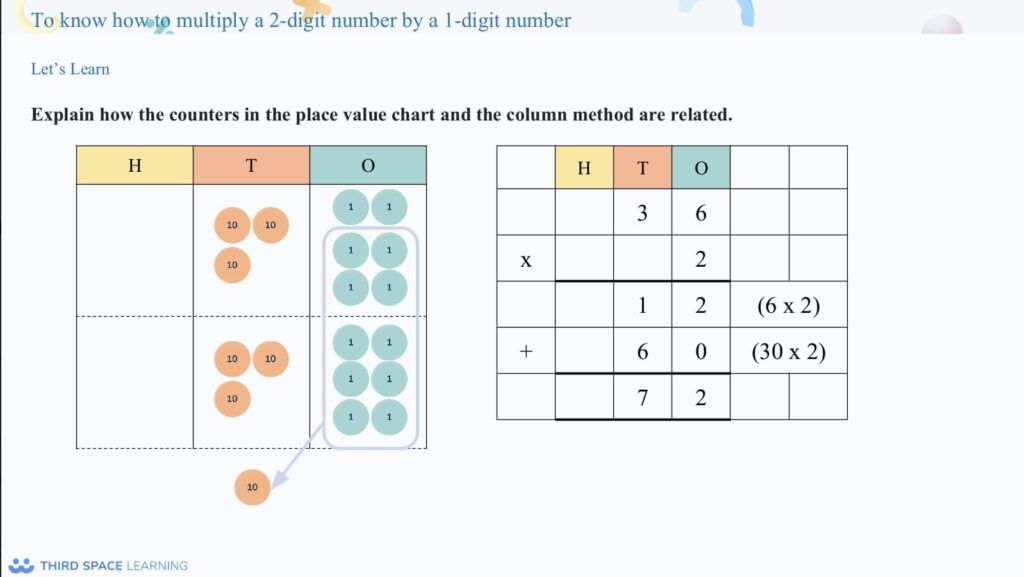
Pupils look at formal methods of multiplication alongside concrete
resources to solidify their understanding of the method.
Example year 4 multiplication and division B questions
1. Calculate 365 × 4
Answer: 1,460
2. 4 children participated in a sponsored swim. Each child swam 125 lengths of the pool. How many lengths did the 4 children swim in total?
Answer: 125 × 4 = 500 lengths
Length and perimeter Year 4
In year 4, pupils build on the knowledge they gained in year 3, progressing from finding the perimeter of rectangles, to finding the perimeter of rectilinear shapes and regular polygons. Pupils are also introduced to calculating missing lengths and to converting between units of measurement (metres and kilometres).
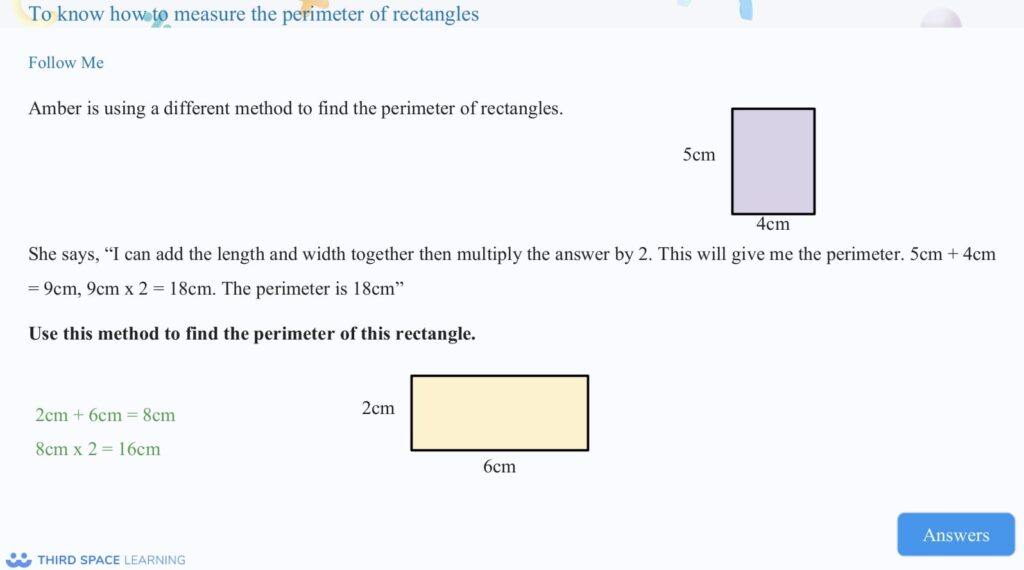
Pupils recap methods they can use to calculate the perimeter of rectangles.
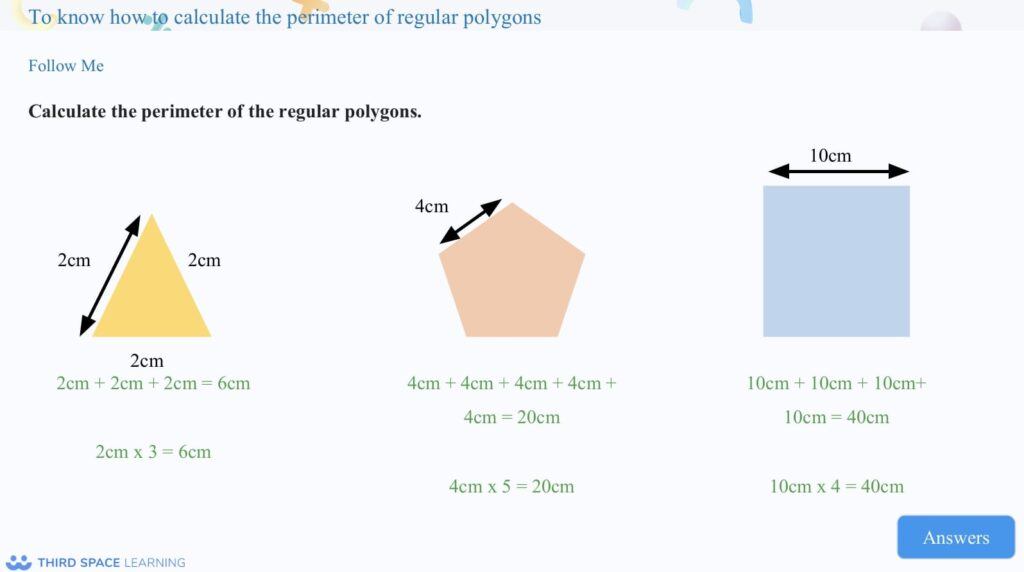
Pupils look at regular shapes and how to find their perimeters.
Example year 4 length and perimeter questions
1. What is the perimeter of a rectangle with a length of 7cm and a width of 4cm?
Answer: 22cm
2. A park had fencing around the play equipment. The play area was 12m long and 8m wide. How many metres of fencing was used around the garden?
Answer: 40m
Fractions Year 4
Fractions is one of the largest blocks pupils cover in year 4, spanning 4 weeks of the spring term. At this stage pupils are introduced to mixed numbers and improper fractions, and build on their understanding of equivalent fractions and adding / subtracting fractions with the same denominator. Students also begin solving problems involving increasingly harder fractions to calculate quantities, and fractions to divide quantities.
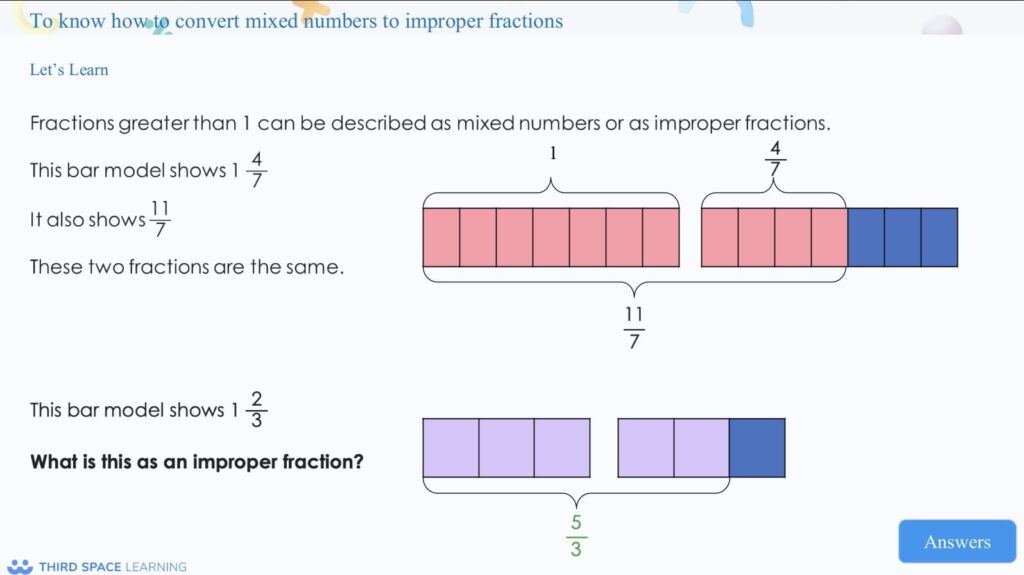
It is important for pupils to understand that fractions can be written in different ways.
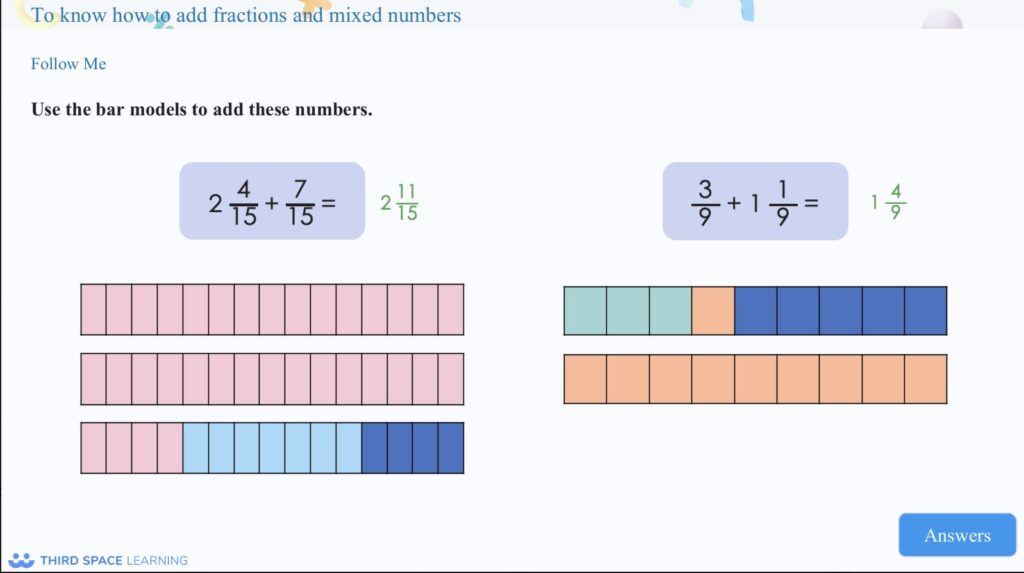
Pupils move on from adding fractions with the same denominator to
adding fractions, including mixed numbers, with the same denominator.
Example year 4 fractions questions
1. Shade in 1331 of this rectangle:
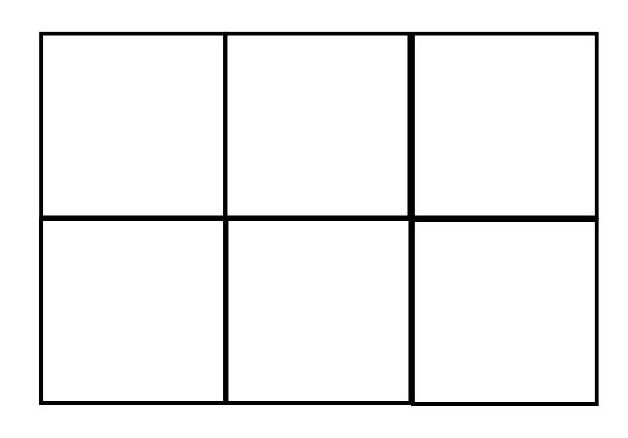
Answer: 2 out of the 6 squares should be shaded in
2. 312+512123+125=
Answer: 812128
3. Mason and Ahmed baked 24 cookies. Mason ate 1661 of the cookies and Ahmed ate 1881. How much did they each eat?
Answer: Ahmed ate 4 cookies and Ahmed 3 cookies
Decimals Year 4
The topic on decimals in year 4 has been split into two blocks, with block A at the end of the spring term and block B in the summer.
Decimals A Year 4
In the first decimals block, students build on their knowledge of fractions from year 3, investigating tenths and hundredths as fractions and decimals, through the use of place value charts and number lines. Pupils are also introduced to the concept of dividing 1- and 2- digit numbers by 10 and 100.
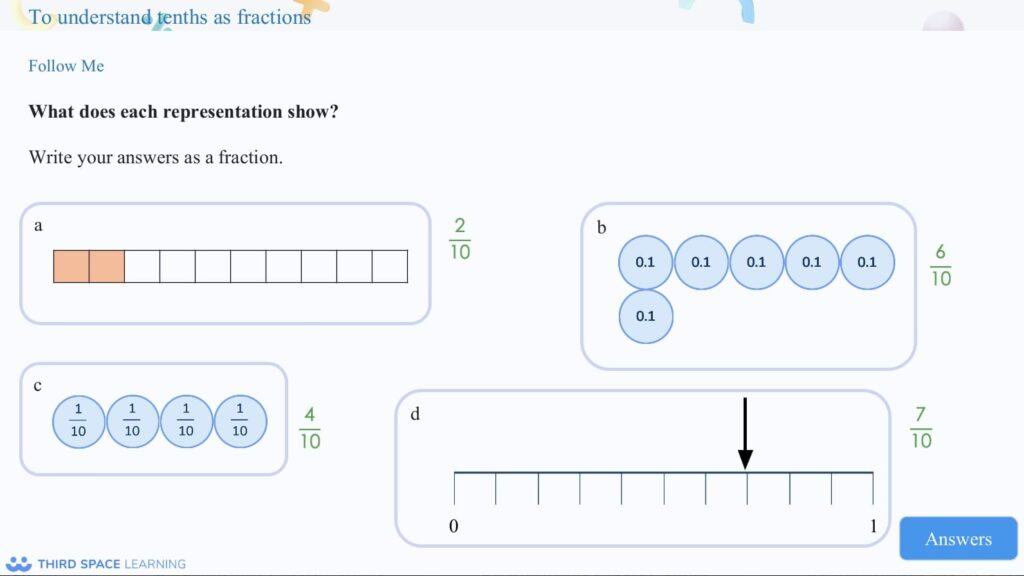
Pupils will be familiar with representing integers in different ways
from their place value block of work. This decimals block of work builds on this
to develop an understanding of tenths as decimals.
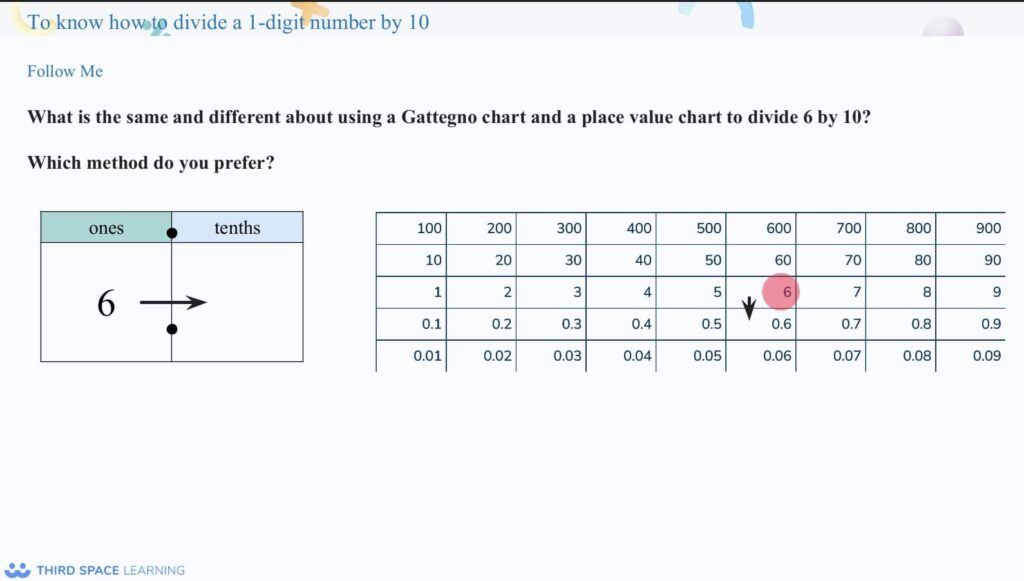
Pupils use a range of methods to help them understand how to divide a 1-digit number by 10.
Example year 4 decimals A questions
1. Write 710107 as a decimal
Answer: 0.7
2. 42 ÷ 10 =
Answer: 4.2
3. What number is being shown on the place value chart?
Show a place value chart with 5 tens, 2 ones and 6 tenths
Answer: 5.26
White Rose Maths Year 4 summer term
Decimals B Year 4
In this second decimals unit, pupils explore making a whole with tenths and with hundredths. Students are also introduced to comparing and ordering decimals; rounding to the nearest whole number and recognising halves and quarters as decimals.
Example year 4 decimals B questions
1. Order the following decimal numbers from smallest to biggest
32.47 32.4 32.8 32.73
Answer: 32.4 32.47 32.73 32.8
2. Round 5.58 to the nearest whole number.
Answer: 6
3. Match the decimals and fractions below:
| 1221 | 0.25 |
| 3443 | 0.1 |
| 110101 | 0.75 |
| 1441 | 0.5 |
Answer:
| 1221 | 0.5 |
| 3443 | 0.75 |
| 110101 | 0.1 |
| 1441 | 0.25 |
Money Year 4
Money is a short topic in year 4. Pupils begin by writing money using decimals, followed by converting between pounds and pence. Students also compare and estimate amounts of money and solve problems, calculating with money.
Example year 4 money questions
1. During a school fair, 5 of the stalls decided to work out how much money they had made. Put their totals in ascending order.
8950p £87.23 5938p 5970p £58.25
Answer: £58.25 5938p 5970p £87.23 8950p
2. Chloe bought 5 cupcakes costing 45p each. If she paid with a £5 note, how much change would she get? Give your answer in pounds and pence.
Answer: £2.75
Time Year 4
By year 4, pupils should have a solid understanding of time and should be able to read, write and convert time between analogue and digital 12- and 24- hour clocks. Students need to also be able to solve problems involving converting hours to minutes, minutes to seconds, years to months and weeks to days.
Example year 4 time questions
1. Match the following 12 hour clock times to the correct 24 hour clock times:
| 3:00pm | 10:15 |
| 7:45am | 15:00 |
| 11:30pm | 13:00 |
| 10:15am | 07:45 |
| 1:00pm | 23:30 |
Answer
| 3:00pm | 15:00 |
| 7:45am | 07:45 |
| 11:30pm | 23:30 |
| 10:15am | 10:15 |
| 1:00pm | 13:00 |
2. Ahmed and Hamza went to watch a film at the cinema. The film start at 2:35pm and finished at 4:15pm. How long was the film?
Answer: 1 hour and 40 minutes
Shape Year 4
Pupils continue to classify shapes using geometrical properties; exploring the different triangles and quadrilaterals. Knowledge of angles progresses to identifying acute and obtuse angles, and comparing and ordering angles by size. Students are introduced to symmetry in year 4; identifying lines of symmetry presented in different orientations.
Example year 4 shape questions
1. Sort the following angles into acute, obtuse and right angles.

Answers:
- Acute: a & c
- Right angle: b
- Obtuse angle: d
2. Label the following triangles as: equilateral, isosceles or scalene:
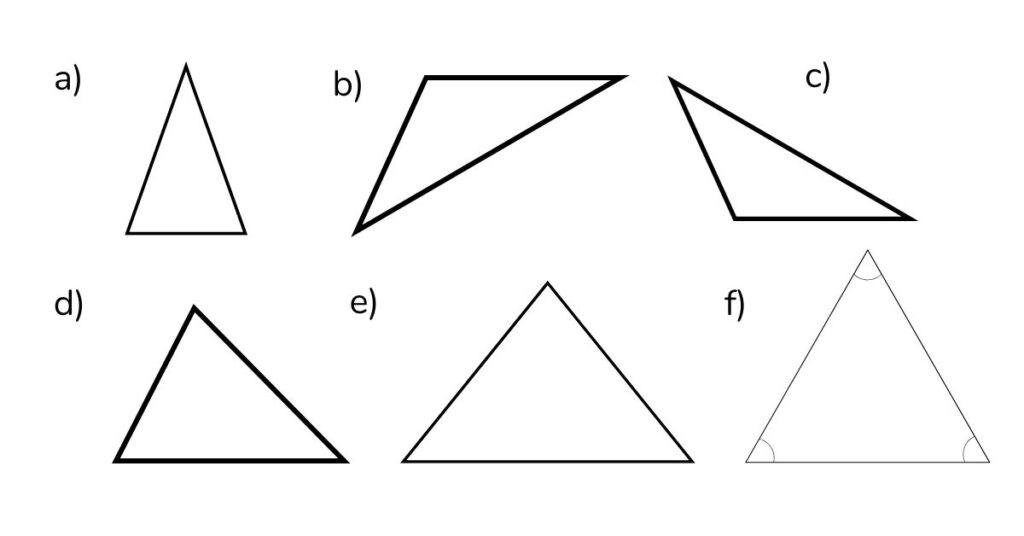
Answers:
- a) Isosceles
- b) Scalene
- c) Scalene
- d) Scalene
- e) Isosceles
- f) Equilateral
Statistics Year 4
Statistics is one of the shortest topics of the year 4 curriculum. Pupils are taught to understand and use simple scales and interpret charts; including bar charts, pictograms and line graphs.
Example year 4 statistics questions
1. Sophie carried out a survey on the favourite colour of children in her year group. She represented her results on a pictogram.
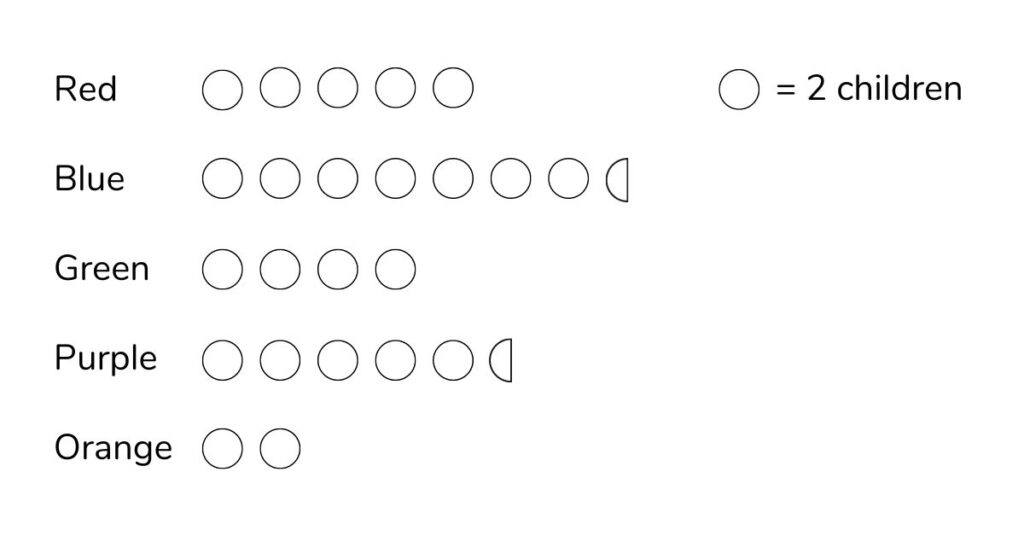
a) How many children chose red as their favourite colour?
b) How many more children chose blue than green?
c) How many children did she survey altogether?
Answers:
a) 10 children
b) children
c) 48 children
2. Ben measured the temperature between 7am and 2pm one day in February. He represented his results as a line graph.
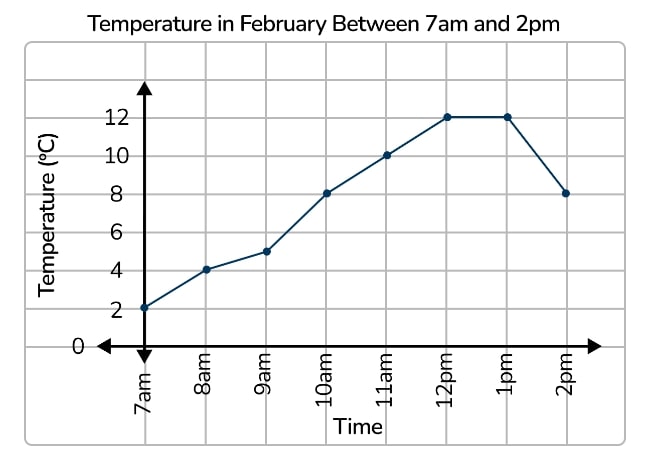
a) What temperature was it at 10am?
b) What was the coldest temperature he recorded?
c) What time did the temperature start to drop again?
Answers:
a) 8℃
b) 2℃
c) 1pm
Position and Direction Year 4
Pupils read, write and use pairs of coordinates in the first quadrant. The also learn to describe movements between positions as translation up, down, left and right.
Example year 4 position and direction questions

1. a) On the grid above, plot the coordinates (1,2) (1,4) and (4,2)
b) If the shape is a rectangle. What would the 4th coordinate be?
Answers:
a) Points plotted accurately on grid
b) The 4th coordinate would be (4,4)
2. Look at the grid below,
a) Record the current coordinates.
b) Translate ‘A’ 3 right and 2 up. Record the new coordinates.
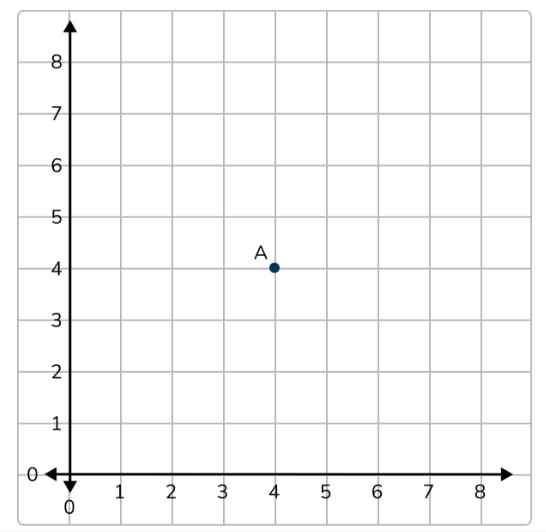
Answer: a) (4,4) b) (7,6)
